Lateral Control Calibration and Testing in a Co-Simulation Framework for Automated Vehicles
Abstract
:1. Introduction
- Three optimization algorithms, namely artificial bee colony, particle swarm optimization, and genetic algorithm are implemented to find the best coefficient of the LQR controller. The primary objective is to eliminate the external disturbances arising from the desired trajectory. The algorithm optimizations are simulated on CarMaker 11.1 and Matlab/Simulink software 2021b. The effectiveness of three algorithmic enhancements is compared to the LQR controller performance without using them. Afterward, the results obtained from three algorithm optimizations are compared together to choose the best algorithm for the model-in-the-loop (MiL) simulation.
- The best algorithm for the MiL simulation is used to simulate a real-time system to assess the performance. The chosen algorithm is simulated on MiL and hardware-in-the-loop (HiL). The outcomes reveal the gap between the MiL simulation and HiL for the vehicle model under consideration.
2. Vehicle Dynamics and Control
2.1. Vehicle Model
2.2. Lateral Controller
2.3. Calibration Optimization
- Calibration solution in the state of the artMatrix K is the gain of the LQR controller and can be calculated from Equation (19). The key to the LQR controller lies in the choice of the weight factors of matrices Q and R in Equation (14) and (15). In the previous study [41], Li et al. chose these weight factors based on the empirical method. First, Q is optimized by setting an intermediate value (arbitrarily chosen to be in the order of ) to R and Q is considered diagonal to simply tuning. Q is tested for a small value (close to 0) and later for a large value of (in the order of ). The two results are compared, and then an intermediate value is tested and the process is repeated by considering the new “small” and “large” limits and the value between and that yielded the best result. The process is then repeated by choosing a new intermediate value between the two limits until an acceptable result is produced. For R optimization, the same approach is followed, setting Q to the optimized value just found.
- Artificial Bee Colony AlgorithmThe flowchart of the ABC algorithm [42] and the LQR controller is shown in Figure 3. The employed bees actively seek K values in the vicinity of their remembered food source, all the while communicating information about these K values to the onlooker bees. The onlooker bees are likely to select good K values from those based on the fitness function as well as evaluate K values using the cost function. A few employed bees translate into the scout bees and search for new food sources until the condition is satisfied.
- Genetic algorithmThe GA [43,44] draws inspiration from biological principles such as mutation, crossover, and selection. The GA commences by configuring the parameters of the BMW car, the initial K values, as well as randomly generated individuals, initiating the evolutionary journey. In each generation, the fitness of every individual is evaluated, typically by assessing the value of the fitness function. Stochastic selection is employed to favor fitter individuals from the current population. These selected individuals’ genomes are then subject to modifications, such as recombination and possibly random mutations, to generate a new generation of candidate solutions. This cyclic process continues, with the newly formed generation becoming the basis for the subsequent iteration. The GA advances through iterations until it reaches a termination condition. The flowchart of GA-LQR is shown in Figure 4.
- Particle swarm optimizationFigure 5 illustrates the flowchart of the PSO algorithm [45] and LQR controller. The optimal weight factor is found by searching for the global in order to enhance the LQR controller performance. Firstly, the parameters of the BMW car model are configured. Then, we set the initial particles’ positions and velocities as well as the initial values of LQR matrices. After that, the algorithm will calculate the fitness function value and find the global best solution. If the condition is satisfied, the algorithm is stopped, otherwise, the algorithm continues to run until satisfies the condition.
3. Simulation and Results
3.1. Model-in-the-Loop Simulation
3.2. Hardware-in-the-Loop Simulation
4. Discussion
5. Conclusions
Author Contributions
Funding
Institutional Review Board Statement
Informed Consent Statement
Data Availability Statement
Acknowledgments
Conflicts of Interest
Nomenclature
| steering angle in the front wheel | |
| steering angle in the rear wheel | |
| front steering angle | |
| rear steering angle | |
| O | mass center point |
| a | distance from O to the front axle |
| b | distance from O to the rear axle |
| yaw angle | |
| yaw rate angle | |
| lateral stiffness of the tires in the front wheels | |
| lateral stiffness of the tires in the rear wheels | |
| the lateral force of the front wheels | |
| the lateral force of the rear wheels | |
| longitudinal velocity | |
| lateral velocity | |
| m | mass of the vehicle |
| rotation inertia of vehicle around the vertical axis | |
| lateral error | |
| heading error | |
| heading angle of the vehicle | |
| reference heading angle | |
| side slip angle | |
| the first-order derivatives of the lateral error | |
| the first-order derivatives of the heading angle error |
References
- Singh, S. Critical Reasons for Crashes Investigated in the National Motor Vehicle Crash Causation Survey. Available online: https://crashstats.nhtsa.dot.gov/Api/Public/ViewPublication/812506 (accessed on 26 November 2023).
- Paden, B.; Čáp, M.; Yong, S.Z.; Yershov, D.; Frazzoli, E. A survey of motion planning and control techniques for self-driving urban vehicles. IEEE Trans. Intell. Veh. 2016, 1, 33–55. [Google Scholar] [CrossRef]
- Chebly, A.; Talj, R.; Charara, A. Coupled longitudinal/lateral controllers for autonomous vehicles navigation, with experimental validation. Control Eng. Pract. 2019, 88, 79–96. [Google Scholar] [CrossRef]
- Zhou, H.; Jia, F.; Jing, H.; Liu, Z.; Güvenç, L. Coordinated longitudinal and lateral motion control for four wheel independent motor-drive electric vehicle. IEEE Trans. Veh. Technol. 2018, 67, 3782–3790. [Google Scholar] [CrossRef]
- Han, Y.; Zhu, Q.; Xiao, Y. Data-driven control of autonomous vehicle using recurrent fuzzy neural network combined with PID method. In Proceedings of the 2018 37th Chinese Control Conference (CCC), Wuhan, China, 25–27 July 2018; IEEE: Piscataway, NJ, USA, 2018; pp. 5239–5244. [Google Scholar]
- Yang, T.; Bai, Z.; Li, Z.; Feng, N.; Chen, L. Intelligent vehicle lateral control method based on feedforward+ predictive LQR algorithm. Actuators 2021, 10, 228. [Google Scholar] [CrossRef]
- Piao, C.; Liu, X.; Lu, C. Lateral control using parameter self-tuning LQR on autonomous vehicle. In Proceedings of the 2019 International Conference on Intelligent Computing, Automation and Systems (ICICAS), Chongqing, China, 6–8 December 2019; IEEE: Piscataway, NJ, USA, 2019; pp. 913–917. [Google Scholar]
- Xu, S.; Peng, H. Design, analysis, and experiments of preview path tracking control for autonomous vehicles. IEEE Trans. Intell. Transp. Syst. 2019, 21, 48–58. [Google Scholar] [CrossRef]
- Yang, K.; Tang, X.; Qin, Y.; Huang, Y.; Wang, H.; Pu, H. Comparative study of trajectory tracking control for automated vehicles via model predictive control and robust H-infinity state feedback control. Chin. J. Mech. Eng. 2021, 34, 74. [Google Scholar] [CrossRef]
- Tagne, G.; Talj, R.; Charara, A. Design and comparison of robust nonlinear controllers for the lateral dynamics of intelligent vehicles. IEEE Trans. Intell. Transp. Syst. 2015, 17, 796–809. [Google Scholar] [CrossRef]
- Li, A.; Niu, C.; Li, S.; Huang, X.; Xu, C.; Liu, G. Research on intelligent vehicle trajectory planning and control based on an improved terminal sliding mode. Appl. Sci. 2022, 12, 2446. [Google Scholar] [CrossRef]
- Fortuna, L.; Frasca, M.; Buscarino, A. Optimal and Robust Control: Advanced Topics with MATLAB®; CRC Press: Boca Raton, FL, USA, 2021. [Google Scholar]
- Nguyen, H.D.; Kim, D.; Son, Y.S.; Han, K. Linear Time-Varying MPC-based Autonomous Emergency Steering Control for Collision Avoidance. IEEE Trans. Veh. Technol. 2023, 72, 12713–12727. [Google Scholar] [CrossRef]
- Kim, D.; Nguyen, H.D.; Han, K. State-Constrained Lane Change Trajectory Planning for Emergency Steering on Slippery Roads. IEEE Trans. Veh. Technol. 2023, 72, 8553–8565. [Google Scholar] [CrossRef]
- Abbas, M.A.; Milman, R.; Eklund, J.M. Obstacle avoidance in real time with nonlinear model predictive control of autonomous vehicles. Can. J. Electr. Comput. Eng. 2017, 40, 12–22. [Google Scholar] [CrossRef]
- Nguyen, H.D.; Choi, M.; Han, K. Risk-informed decision-making and control strategies for autonomous vehicles in emergency situations. Accid. Anal. Prev. 2023, 193, 107305. [Google Scholar] [CrossRef]
- Folkers, A.; Rick, M.; Büskens, C. Controlling an autonomous vehicle with deep reinforcement learning. In Proceedings of the 2019 IEEE Intelligent Vehicles Symposium (IV), Paris, France, 9–12 June 2019; IEEE: Piscataway, NJ, USA, 2019; pp. 2025–2031. [Google Scholar]
- Dai, X.; Li, C.K.; Rad, A.B. An approach to tune fuzzy controllers based on reinforcement learning for autonomous vehicle control. IEEE Trans. Intell. Transp. Syst. 2005, 6, 285–293. [Google Scholar] [CrossRef]
- Attia, R.; Orjuela, R.; Basset, M. Coupled longitudinal and lateral control strategy improving lateral stability for autonomous vehicle. In Proceedings of the 2012 American Control Conference (ACC), Montreal, QC, Canada, 27–29 June 2012; IEEE: Piscataway, NJ, USA, 2012; pp. 6509–6514. [Google Scholar]
- Khodayari, A.; Ghaffari, A.; Ameli, S.; Flahatgar, J. A historical review on lateral and longitudinal control of autonomous vehicle motions. In Proceedings of the 2010 International Conference on Mechanical and Electrical Technology, Singapore, 10–12 September 2010; IEEE: Piscataway, NJ, USA, 2010; pp. 421–429. [Google Scholar]
- Awad, N.; Lasheen, A.; Elnaggar, M.; Kamel, A. Model predictive control with fuzzy logic switching for path tracking of autonomous vehicles. ISA Trans. 2022, 129, 193–205. [Google Scholar] [CrossRef] [PubMed]
- Ohara, H.; Murakami, T. A stability control by active angle control of front-wheel in a vehicle system. IEEE Trans. Ind. Electron. 2008, 55, 1277–1285. [Google Scholar] [CrossRef]
- Wang, H.; Han, J.; Zhang, H. Lateral Stability Analysis of 4WID Electric Vehicle Based on Sliding Mode Control and Optimal Distribution Torque Strategy. Actuators 2022, 11, 244. [Google Scholar] [CrossRef]
- Zhang, W. A robust lateral tracking control strategy for autonomous driving vehicles. Mech. Syst. Signal Process. 2021, 150, 107238. [Google Scholar] [CrossRef]
- Kapania, N.R.; Gerdes, J.C. Design of a feedback-feedforward steering controller for accurate path tracking and stability at the limits of handling. Veh. Syst. Dyn. 2015, 53, 1687–1704. [Google Scholar] [CrossRef]
- Yuan, T.; Zhao, R. LQR-MPC-Based Trajectory-Tracking Controller of Autonomous Vehicle Subject to Coupling Effects and Driving State Uncertainties. Sensors 2022, 22, 5556. [Google Scholar] [CrossRef]
- Lu, A.; Lu, Z.; Li, R.; Tian, G. Adaptive LQR Path Tracking Control for 4WS Electric Vehicles Based on Genetic Algorithm. In Proceedings of the 2022 6th CAA International Conference on Vehicular Control and Intelligence (CVCI), Nanjing, China, 28–30 October 2022; IEEE: Piscataway, NJ, USA, 2022; pp. 1–6. [Google Scholar]
- Wang, Z.; Sun, K.; Ma, S.; Sun, L.; Gao, W.; Dong, Z. Improved Linear Quadratic Regulator Lateral Path Tracking Approach Based on a Real-Time Updated Algorithm with Fuzzy Control and Cosine Similarity for Autonomous Vehicles. Electronics 2022, 11, 3703. [Google Scholar] [CrossRef]
- Zhang, Y.; Gao, F.; Zhao, F. Research on Path Planning and Tracking Control of Autonomous Vehicles Based on Improved RRT* and PSO-LQR. Processes 2023, 11, 1841. [Google Scholar] [CrossRef]
- Li, H.; Nalic, D.; Makkapati, V.; Eichberger, A.; Fang, X.; Tettamanti, T. A real-time co-simulation framework for virtual test and validation on a high dynamic vehicle test bed. In Proceedings of the 2021 IEEE Intelligent Vehicles Symposium (IV), Nagoya, Japan, 11–17 July 2021; IEEE: Piscataway, NJ, USA, 2021; pp. 1132–1137. [Google Scholar]
- Li, H.; Makkapati, V.P.; Wan, L.; Tomasch, E.; Hoschopf, H.; Eichberger, A. Validation of Automated Driving Function Based on the Apollo Platform: A Milestone for Simulation with Vehicle-in-the-Loop Testbed. Vehicles 2023, 5, 718–731. [Google Scholar] [CrossRef]
- An, H.Y.; Choi, W.S.; Choi, S.G. Real-Time Path Planning for Trajectory Control in Autonomous Driving. In Proceedings of the 2022 24th International Conference on Advanced Communication Technology (ICACT), Seoul, Republic of Korea, 13–16 February 2022; IEEE: Piscataway, NJ, USA, 2022; pp. 154–159. [Google Scholar]
- Lee, T.; Seo, D.; Lee, J.; Kang, Y. Real-Time Drift-Driving Control for an Autonomous Vehicle: Learning from Nonlinear Model Predictive Control via a Deep Neural Network. Electronics 2022, 11, 2651. [Google Scholar] [CrossRef]
- Liang, Z.; Chen, Y.; Zhao, J. Real-time Parameter Updating and Path-following Control for Autonomous Vehicles on Slope Roads. Int. J. Control. Autom. Syst. 2022, 20, 2178–2190. [Google Scholar] [CrossRef]
- Collado-Gonzalez, I.; Gonzalez-Garcia, A.; Sotelo, C.; Sotelo, D.; Castañeda, H. A Real-Time NMPC Guidance Law and Robust Control for an Autonomous Surface Vehicle. IFAC-PapersOnLine 2021, 54, 252–257. [Google Scholar] [CrossRef]
- Liniger, A.; Lygeros, J. Real-time control for autonomous racing based on viability theory. IEEE Trans. Control Syst. Technol. 2017, 27, 464–478. [Google Scholar] [CrossRef]
- Available online: https://developer.apollo.auto/index.html (accessed on 19 June 2019).
- Jazar, R.N. Vehicle Dynamics; Springer: Berlin/Heidelberg, Germany, 2008; Volume 1. [Google Scholar]
- Fan, H.; Zhu, F.; Liu, C.; Zhang, L.; Zhuang, L.; Li, D.; Zhu, W.; Hu, J.; Li, H.; Kong, Q. Baidu apollo em motion planner. arXiv 2018, arXiv:1807.08048. [Google Scholar]
- Available online: https://github.com/ApolloAuto/apollo.git (accessed on 4 July 2017).
- Li, H.; De Cristofaro, F.; Orucevic, F.; Zhengguo, G.; Eichberger, A. Quantitative Analysis of the Impact of Baidu Apollo Parameterization on Trajectory Planning in a Critical Scenario. In Proceedings of the ZIRP 2023, Zagreb, Croatia, 7–8 December 2023. [Google Scholar]
- Karaboga, D. An Idea Based on Honey Bee Swarm for Numerical Optimization; Technical report, Technical report-tr06; Erciyes University, Engineering Faculty, Computer Engineering Department: Kayseri, Turkey, 2005. [Google Scholar]
- Barricelli, N.A. Numerical testing of evolution theories: Part II preliminary tests of performance. Symbiogenesis and terrestrial life. Acta Biotheor. 1963, 16, 99–126. [Google Scholar] [CrossRef]
- Ingo, R. Evolution strategy: Optimization of technical systems by means of biological evolution. Fromman-Holzboog. Stuttgart 1973, 104, 15. [Google Scholar]
- Kennedy, J.; Eberhart, R. Particle swarm optimization. In Proceedings of the Proceedings of ICNN’95-International Conference on Neural Networks, Perth, WA, Australia, 27 November–1 December 1995; IEEE: Piscataway, NJ, USA, 1995; Volume 4, pp. 1942–1948. [Google Scholar]
- Erik, R.B. Aufbau von Validierten Fahrzeugmodellen. Master’s Thesis, Graz University of Technology, Graz, Austria, 2023. [Google Scholar]
- Kanuric, T.; Li, H.; Pannagger, P.; Nalić, Đ.; Eichberger, A. Advanced Lane Detection Model for the Virtual Development of Highly Automated Functions. In Proceedings of the International ViennaMotor Symposium 2023, Vienna, Austria, 26–28 April 2023. [Google Scholar]
- Technical Report. Available online: https://ipg-automotive.com/en/products-solutions/software/carmaker/ (accessed on 30 March 2022).
- Technical Report. Available online: https://www.ksengineers.com/ (accessed on 26 November 2023).
- European Union Aviation Safety Agency. Proposed CM-S-014 Modelling & Simulation—for Consultation; Technical Report; European Union Aviation Safety Agency: Cologne, Germany, 2021. [Google Scholar]
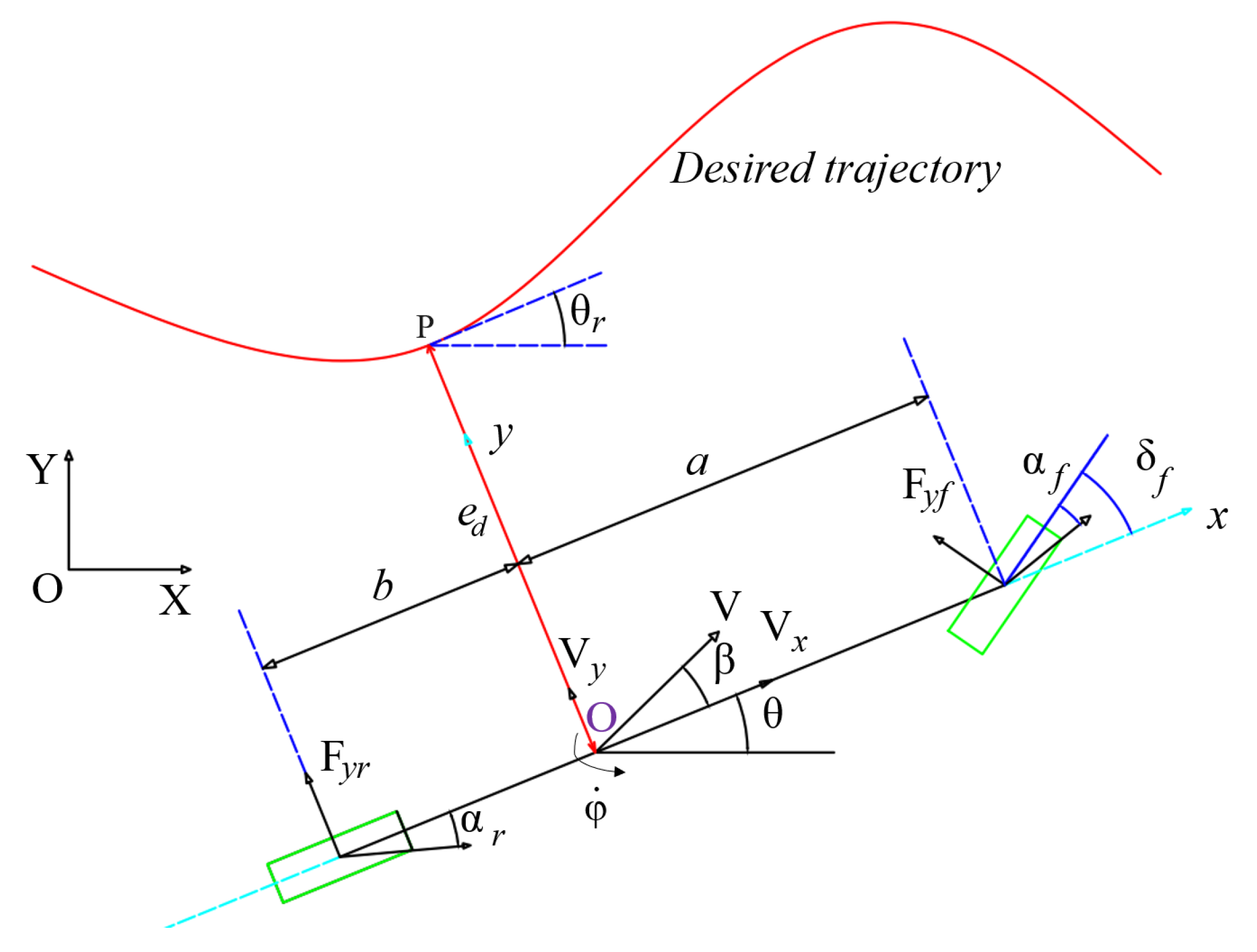
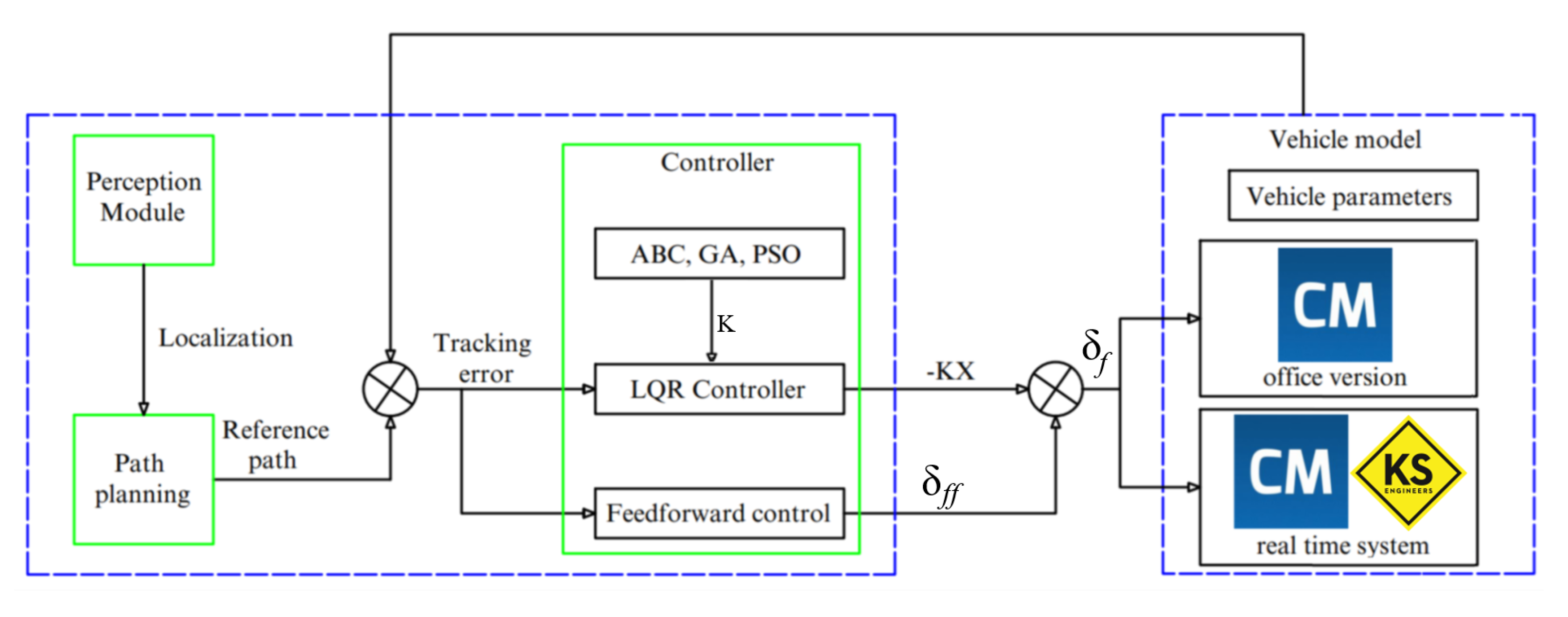
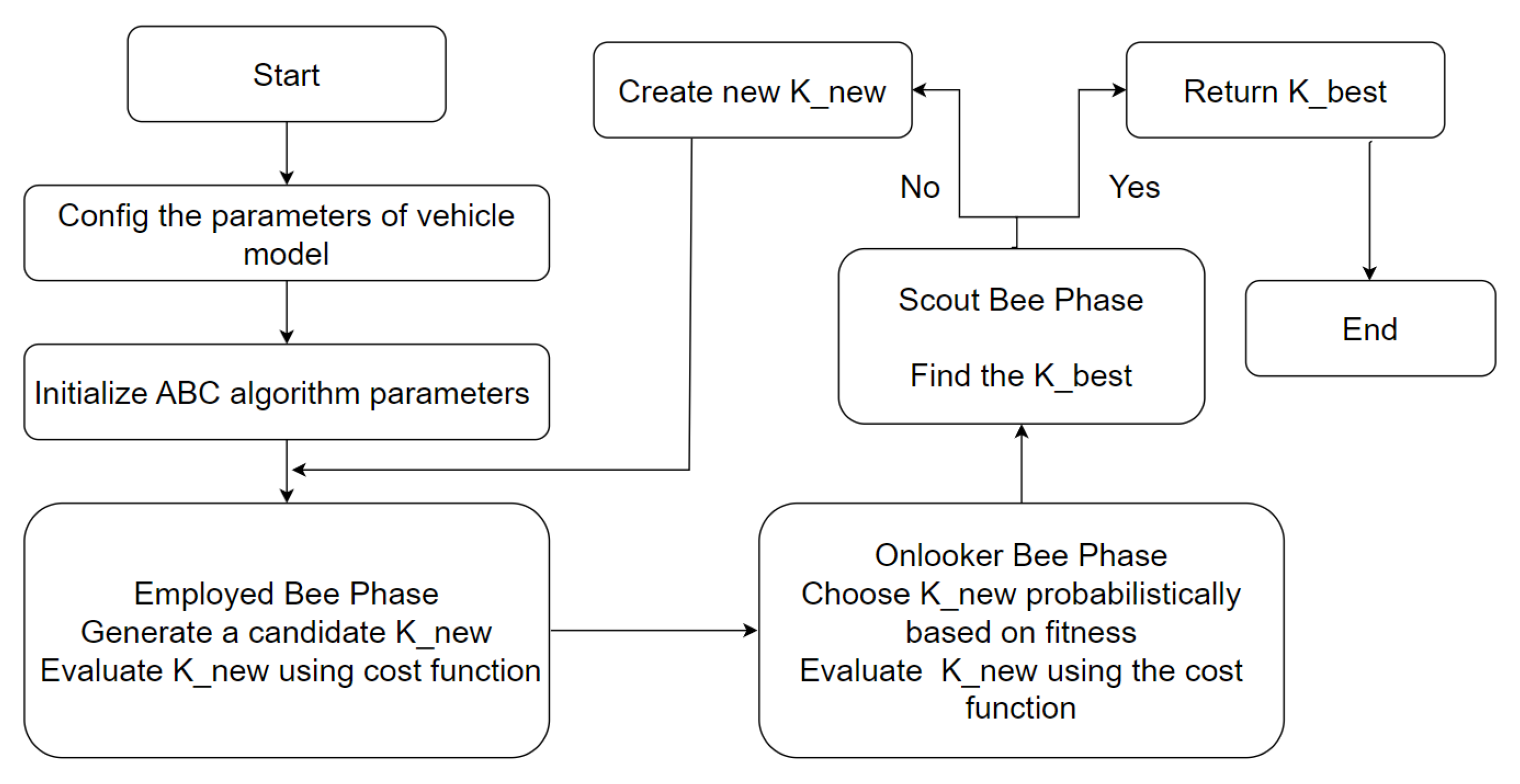


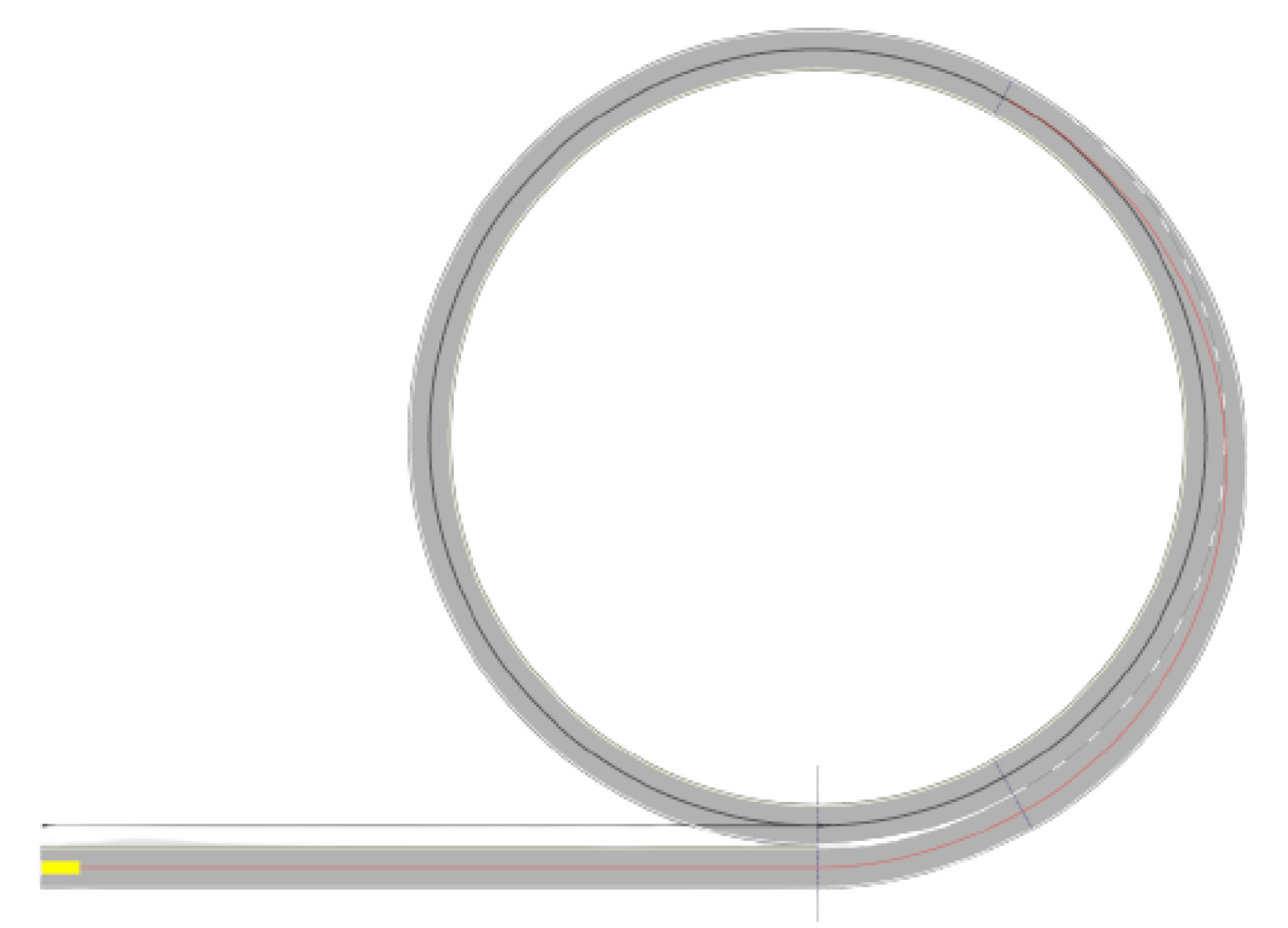
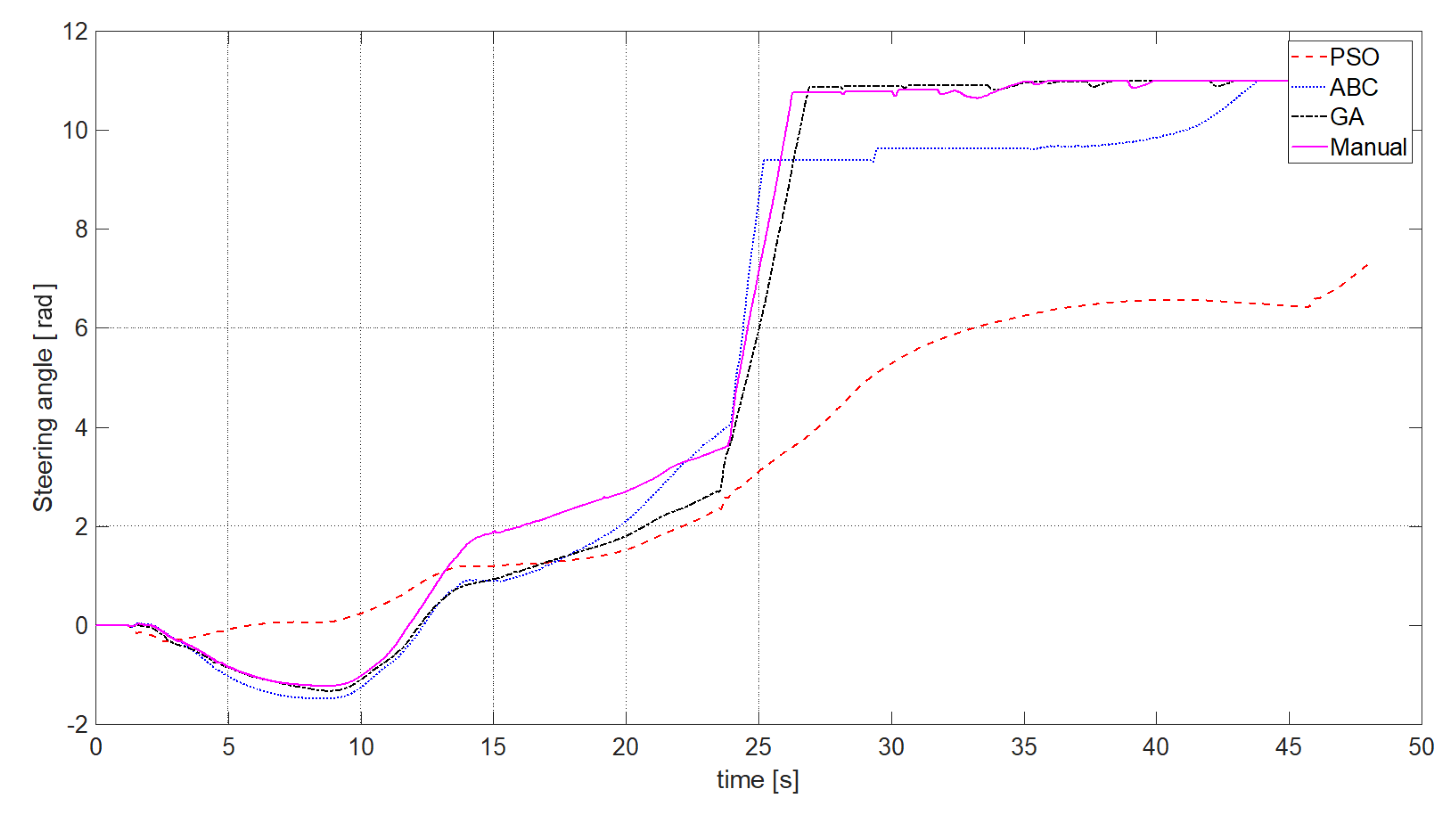
| Compare | Manual | ABC | GA | PSO |
|---|---|---|---|---|
| Absolute max values dL | 1.2026 | 2.6069 | 1.5611 | 0.0576 |
| Absolute mean values dL | 0.0249 | 0.0242 | 0.0207 | 0.0061 |
| Absolute max values L | 3.5481 | 4.4860 | 3.5151 | 0.7532 |
| Absolute mean values L | 0.5854 | 0.7696 | 0.5549 | 0.1582 |
| Compare | Absolute Max Values dL | Absolute Mean Values dL | Absolute Max Values L | Absolute Mean Values L |
|---|---|---|---|---|
| MiL | 0.0576 | 0.0061 | 0.7532 | 0.1582 |
| HiL | 0.2894 | 0.0098 | 2.5857 | 0.5339 |
Disclaimer/Publisher’s Note: The statements, opinions and data contained in all publications are solely those of the individual author(s) and contributor(s) and not of MDPI and/or the editor(s). MDPI and/or the editor(s) disclaim responsibility for any injury to people or property resulting from any ideas, methods, instructions or products referred to in the content. |
© 2023 by the authors. Licensee MDPI, Basel, Switzerland. This article is an open access article distributed under the terms and conditions of the Creative Commons Attribution (CC BY) license (https://creativecommons.org/licenses/by/4.0/).
Share and Cite
Bui, D.-T.; Li, H.; De Cristofaro, F.; Eichberger, A. Lateral Control Calibration and Testing in a Co-Simulation Framework for Automated Vehicles. Appl. Sci. 2023, 13, 12898. https://doi.org/10.3390/app132312898
Bui D-T, Li H, De Cristofaro F, Eichberger A. Lateral Control Calibration and Testing in a Co-Simulation Framework for Automated Vehicles. Applied Sciences. 2023; 13(23):12898. https://doi.org/10.3390/app132312898
Chicago/Turabian StyleBui, Duc-Tien, Hexuan Li, Francesco De Cristofaro, and Arno Eichberger. 2023. "Lateral Control Calibration and Testing in a Co-Simulation Framework for Automated Vehicles" Applied Sciences 13, no. 23: 12898. https://doi.org/10.3390/app132312898
APA StyleBui, D.-T., Li, H., De Cristofaro, F., & Eichberger, A. (2023). Lateral Control Calibration and Testing in a Co-Simulation Framework for Automated Vehicles. Applied Sciences, 13(23), 12898. https://doi.org/10.3390/app132312898







